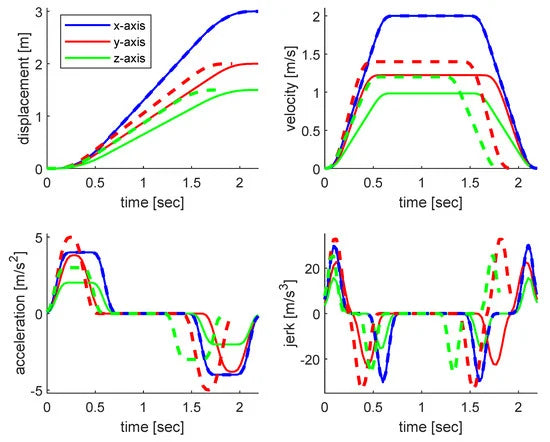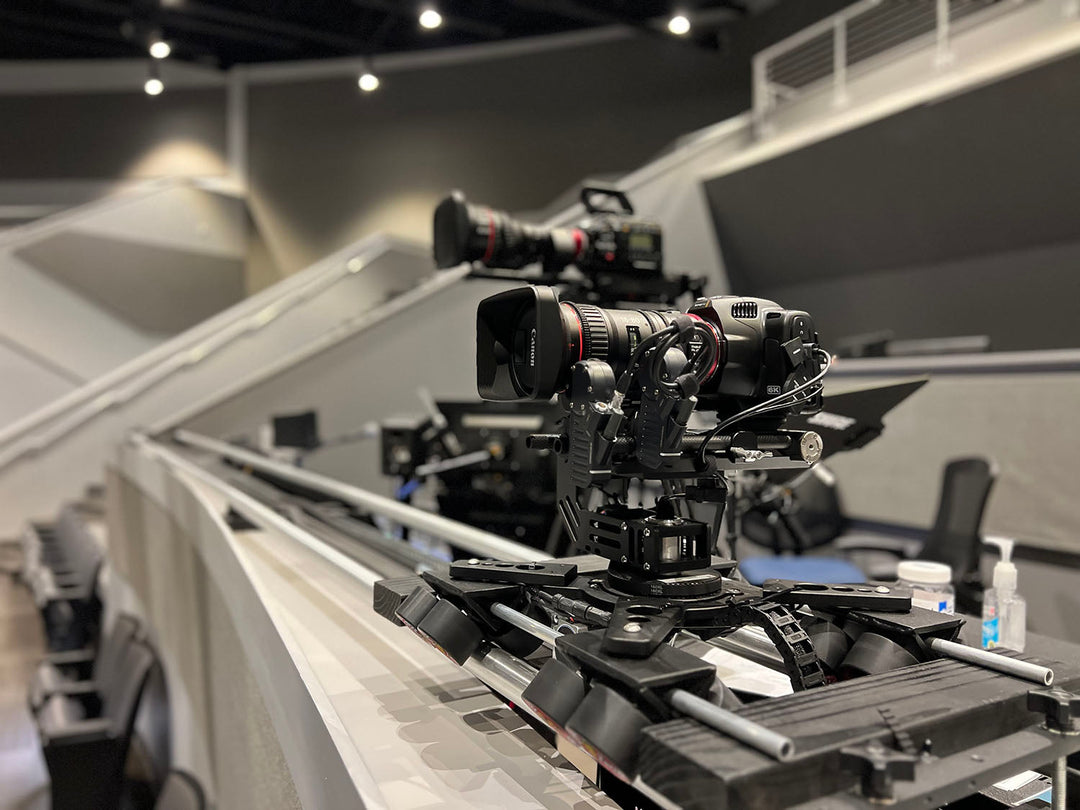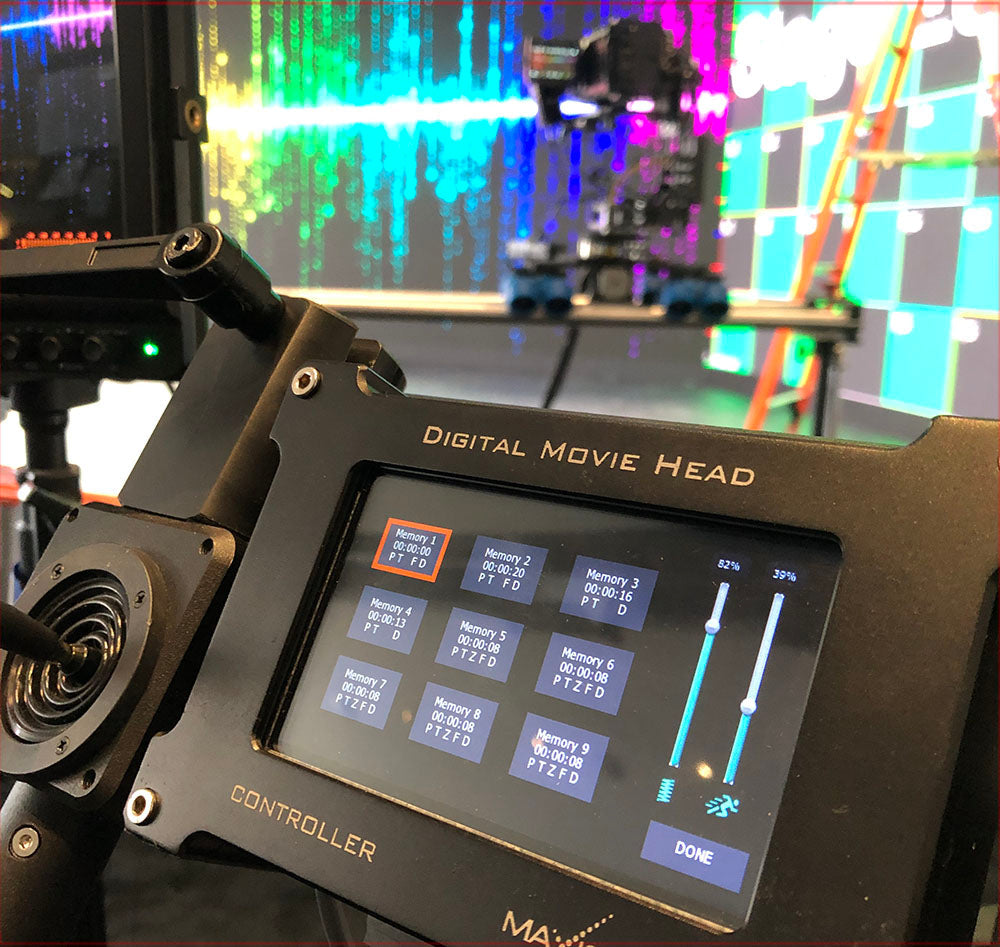Understanding Motion Control Profiles: Trapezoidal and S-Curve for Maxicrane’s Ostrich and Scarab Systems

In the realm of motion control for film production, the precision and smoothness of camera movements are paramount. Maxicrane’s Ostrich and Scarab systems leverage advanced motion control profiles to achieve the desired camera motions, ensuring high-quality results. This blog post will delve into the two primary motion control profiles: trapezoidal and S-curve profiles, and how they impact induced vibrations and smooth motion.
Motion Control Profiles
Motion control profiles are predefined paths that dictate how a camera accelerates, moves, and decelerates. These profiles are crucial for achieving smooth and controlled camera movements, minimizing vibrations, and enhancing the overall quality of the footage.
Trapezoidal Motion Profiles
A trapezoidal motion profile is characterized by three distinct phases: acceleration, constant velocity, and deceleration. The velocity-time graph of a trapezoidal profile resembles a trapezoid, hence the name.
- Acceleration Phase: The camera accelerates from a standstill to a predetermined velocity.
- Constant Velocity Phase: The camera moves at a constant speed.
- Deceleration Phase: The camera slows down smoothly to a stop.
Advantages:
- Simplicity: Trapezoidal profiles are straightforward to implement and control.
- Predictability: The motion is highly predictable, making it easier to synchronize with other elements.
Disadvantages:
- Induced Vibrations: The abrupt changes in acceleration and deceleration can induce vibrations, particularly in lightweight or flexible camera rigs.
S-Curve Motion Profiles
An S-curve motion profile, also known as a sigmoid profile, features a smooth transition between acceleration, constant velocity, and deceleration phases. The velocity-time graph of an S-curve profile forms an “S” shape.
- Smooth Acceleration and Deceleration: The transitions between phases are gradual, reducing the impact of abrupt changes in speed.
Advantages:
- Reduced Vibrations: The gradual transitions minimize induced vibrations, leading to smoother camera movements.
- Enhanced Control: Provides greater control over the motion, especially for complex shots requiring precise movements.

Disadvantages:
- Complexity: S-curve profiles are more complex to implement and may require advanced control algorithms.
- Slower Movements: The gradual transitions can result in slower overall movements, which may not be ideal for all scenarios.
Application in Maxicrane’s Ostrich and Scarab Systems
Maxicrane’s Ostrich and Scarab systems are designed to leverage the benefits of both trapezoidal and S-curve motion profiles, depending on the specific requirements of the shot.
- Ostrich MK2: This advanced six-axis programmable crane-bot benefits significantly from S-curve profiles, which ensure smooth and vibration-free movements. This is particularly useful for dynamic shots where precision and smoothness are critical.
- Scarab Dolly: Known for its robust and versatile design, the Scarab Dolly can utilize both motion profiles effectively. Trapezoidal profiles are often used for straightforward tracking shots where predictability is key, while S-curve profiles are preferred for more complex movements requiring enhanced smoothness.
Inducing Vibrations vs. Smooth Motion
Vibrations are an inherent challenge in motion control systems, particularly during rapid accelerations and decelerations. The choice of motion profile plays a crucial role in managing these vibrations:
- Trapezoidal Profiles: While efficient for certain movements, they can introduce vibrations at the points of acceleration and deceleration. These vibrations can be mitigated through the use of dampers and other mechanical stabilization techniques.
- S-Curve Profiles: By offering smooth transitions, S-curve profiles inherently reduce the risk of induced vibrations. This results in more fluid camera movements, enhancing the quality of the captured footage.
Understanding and utilizing the appropriate motion control profile is essential for achieving the desired camera movements in film production. Maxicrane’s Ostrich and Scarab systems are equipped to handle both trapezoidal and S-curve profiles, providing filmmakers with the flexibility to choose the best profile for their specific needs. By leveraging these advanced motion control technologies, Maxicrane continues to set the standard for precision and quality in motion control systems.





Leave a comment